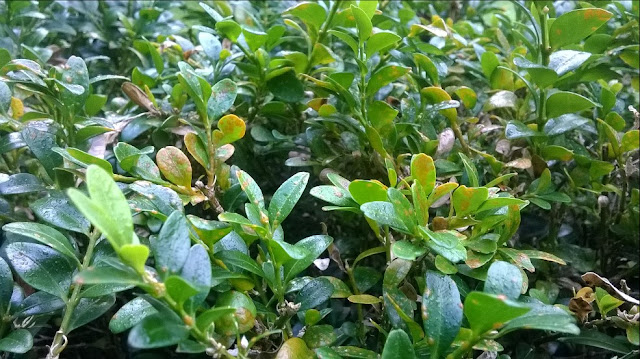What Causes Buxus Box Brown Leaves?
Box shrubs -buxus sempervirens- are wonderful evergreen plants used mainly in ornamental gardens to formalize the edge of a border or terrace with a low hedge. They are often found being used for this purpose at grand country houses and palaces across Europe. They can also be grown into larger shrubs to make topiary shapes Terracotta pots placed on your Terrace or Patio look fabulous containing carefully clipped box balls and topiary triangles. Problems can occur when the leaves go brown and drop off leaving channels of dead wood in the middle of low hedges and a generally unhealthy and unsightly plant in everything else. Assuming the plant is not heavily waterlogged or suffering from planting/feeding problems, there are usually two main reasons for this
Box Blight on Buxus Hedging Am I Infected?
Number one on our list is a virulent fungal disease which can do great damage to Buxus. This results in browning leaves and bare patches and as more of the Box plants become infected, great dead chasms of skeletal branches open up in the centre of the plant or hedge. It spreads by fungal spores attaching themselves to the leaves, especially in humid conditions.
Buxus Box Volutella Blight (Volutella Buxi)
There are two main strains of Buxus Box Blight present here in the UK, both are funguses. Volutella Blight (Volutella buxi) is best identified by the pink and orange clusters of spores on the leaves, especially the underside. It infects the buxus usually through damaged branches, especially when the buxus shrubs are clipped. It can spread quickly when conditions are warm and humid and spores can remain active in fallen leaves even over the winter.
Buxus Box Blight Cylindrocladium Buxicola
Cylindrocladium Buxicola is the other common fungal blight to be found in the UK. Again it will decimate box plants and quickly spread in moist conditions. It is identified by dark spots appearing on the leaves with white/grey almost mildew-like fungal spores on the underside of leaves. Unlike Volutella, Cylindrocladium can penetrate buxus without the need for clipped or damaged stems. Its spores too can survive the winter infecting new growth or replanted box in the Spring.
Box Tree Moth Caterpillar Damage
There is another pest which can cause significant damage to buxus trees. Box moths only like to lay their eggs within box trees normally under the leaves, with the resulting caterpillars literally sucking the life out of your plants. Commonly known as the Asian box tree caterpillar this pesky bug is a foreign invader first discovered in Europe in 2007. About 4cm/1.5inches in length they can devastate a bush within a few days. Scroll down for treatment solutions.
Box Blight Cure, Treatment and Prevention
If you are about to purchase new box plants the first line of defence is to make sure you purchase disease-free stock. If you are not sure about them it might be worth keeping them in quarantine away from other buxus in your garden for a few weeks.
If there are a small amount of infected leaves/branches cut them out pruning right back to the green healthy stems. Then apply a suitable fungicide. Burn the prunings.
Never compost the clipped leaves of box plants. Burn them even if there are no symptoms present
Ideally, remove and burn plants that have identifiable symptoms and are significantly infected. If however you really would not prefer to remove a much-loved specimen you could try pruning it right back hard until the main structure of the plant, and of course, burn the prunings.
Obviously, It may be undesirable or not practical to remove hedges or much-loved topiary. The blight is a fungus and its spores live on the diseased leaves that have fallen and settled on the ground, so removing the infected plants alone may not solve the problem. The next line of defence is chemical. There are several products available to the amateur gardener.

Bayer Garden produce a Fungicide which helps treat Box Blight. The product is a concentrate so you will need a suitable sprayer to apply the mix. It is a Systemic fungicide, that is to say, the product works through the plant's system treating and preventing infections from the inside out.
TOPBUXUS Health Mix For Box Blight Treatment
Another good product on the market is the Top Buxus health mix. It's a foliar treatment that stops and prevents box blight. It helps keep your boxwood healthy and resistant to disease and blight infestation. It needs to be applied with a sprayer like those below.
Box Moth Caterpillar Treatments
If you've got the time you can simply pick off the caterpillars by hand wearing suitable gloves and squish them. Alternatively, an insecticide Treatment or Caterpillar repellent applied regularly should do the trick. Bear in mind that box trees are naturally dense so make sure as much of the plant is thoroughly wetted. A repeat application will likely be necessary until all signs of the caterpillars have disappeared.
General discussion and your views are welcome please say hello. I regret however because of my busy schedule, I am unable to answer many questions. Sneaky advertising will be deleted sorry. Thanks so much for visiting my blog today.









No comments:
Post a Comment